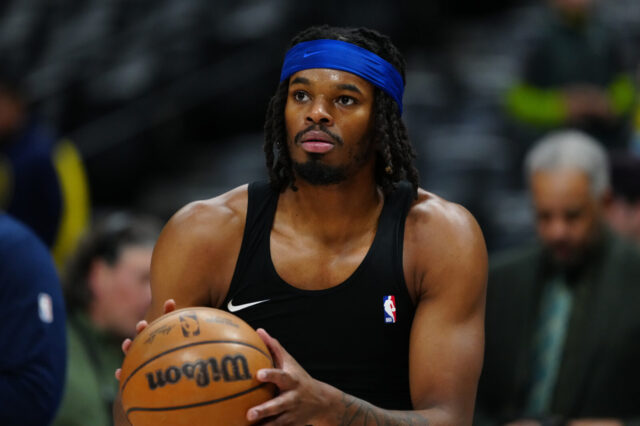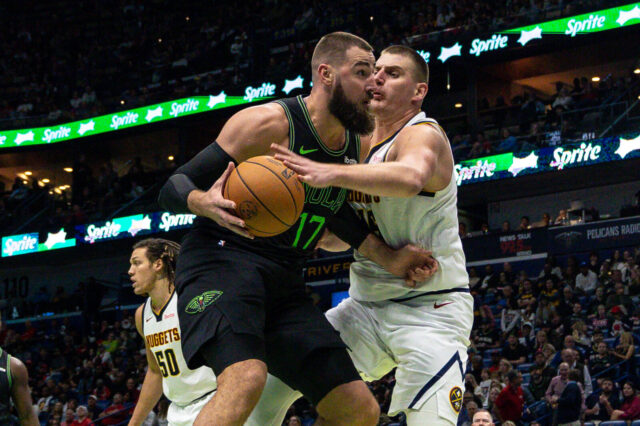It’s clear watching the first 10 games of the 2020-21 Denver Nuggets season that Jamal Murray is somewhere between the player he was during the 2019-20 regular season (a solid starting point guard with All-Star potential) and the 2020 bubble (an out-of-body experience comparable to Stephen Curry’s best season).
Part of evaluating Denver’s championship odds this season boiled down to a decision between which version of Murray the Nuggets would get for 2020-21. One of those players was a flamethrower every few nights, while the other was a flamethrower every single night.
As it turns out, the Nuggets have had more of regular season Murray than bubble Murray thus far, but it’s unclear how much of that is because Murray CAN’T do those things. It’s possible that he’s choosing to do those things less often.
A significant change
| Jamal Murray’s change in usage | Minutes per game | FGAs per 36 | Usage Rate | Assist Rate | Time of Possession |
|---|---|---|---|---|---|
| 2019-20 (59 games) | 32.3 | 16.9 | 25.2 | 22.8 | 5.9 minutes |
| 2020-21 (9 games) | 35.1 | 14.9 | 22.5 | 15.9 | 5.0 minutes |
Through his first nine games of the season, Murray is having a surprisingly down year from a usage perspective. From less shots to less time with the ball in his hands in general, Murray is playing a lot more like his first season in the starting lineup, the 2017-18 season. He split ball handling duties with Gary Harris that year. This year, Murray, Harris, and Will Barton are all sharing the ball rather equally on the perimeter of late.
Plus, Nikola Jokić has taken a a step forward with his usage as well. The big man is averaging an absurd 103.8 touches per game, six more than his league leading figure last year. Murray’s down from 75.7 to 69.9 touches per game this year, almost a direct correlation. The Nuggets offense has certainly benefitted from the change, but Murray’s individual numbers have not.
Despite the reduced usage, Murray’s efficiency has been at a career high level. The fifth year guard is shooting a career high 55.4% from two-point range to go with a career high 38.6% from three-point range. His comfort level when taking shots has remained high, and he’s had takeover moments, especially at the beginning of games, where he can appear unstoppable. Murray’s 7.6 points per game in the first quarter ranks seventh in the NBA, behind only Bradley Beal, Kyrie Irving, Stephen Curry, Giannis Antetokounmpo, Luka Doncic, and Zach LaVine. All six of those guys are averaging at least 26.6 points per game this year, while Murray’s at only 19.7 per game himself.
Here are Murray’s point per game totals separated by quarter:
- First Quarter — 7.6
- Second Quarter — 4.3
- Third Quarter — 4.4
- Fourth Quarter — 4.3
Now, there’s nothing inherently wrong with such a distribution. Murray’s a starter and plays mostly during the first and third quarters. His ability to help the Nuggets get off to a strong start has them sporting the second best Net Rating in the NBA in the first quarter of games. Unfortunately, that Net Rating drops to 21st in the second quarter, ninth in the third quarter, and 11th in the fourth quarter.
The Nuggets are a different, more dynamic team when Murray gets hot and causes the defense to contort to his will. Murray taking a step back in usage after the first quarter of games has let some teams off the hook. It’s early in the year, so it’s nothing to be concerned about, but it’s clear that Murray’s a better player than the raw number totals he has put up thus far. I’m sure Nuggets fans would be very happy with an additional reminder of just how dominant Murray can be when he wants to take over games. The third and fourth quarter would be a great time for such practices.


